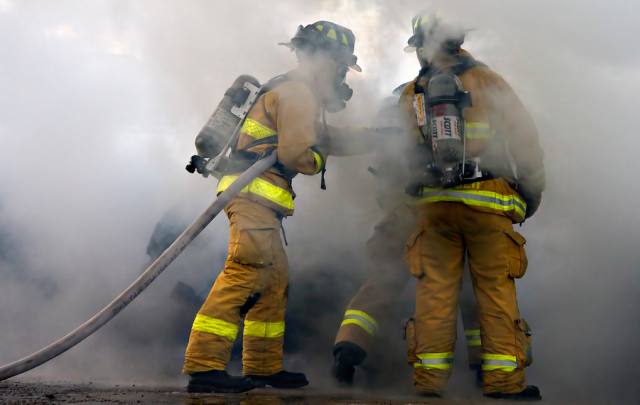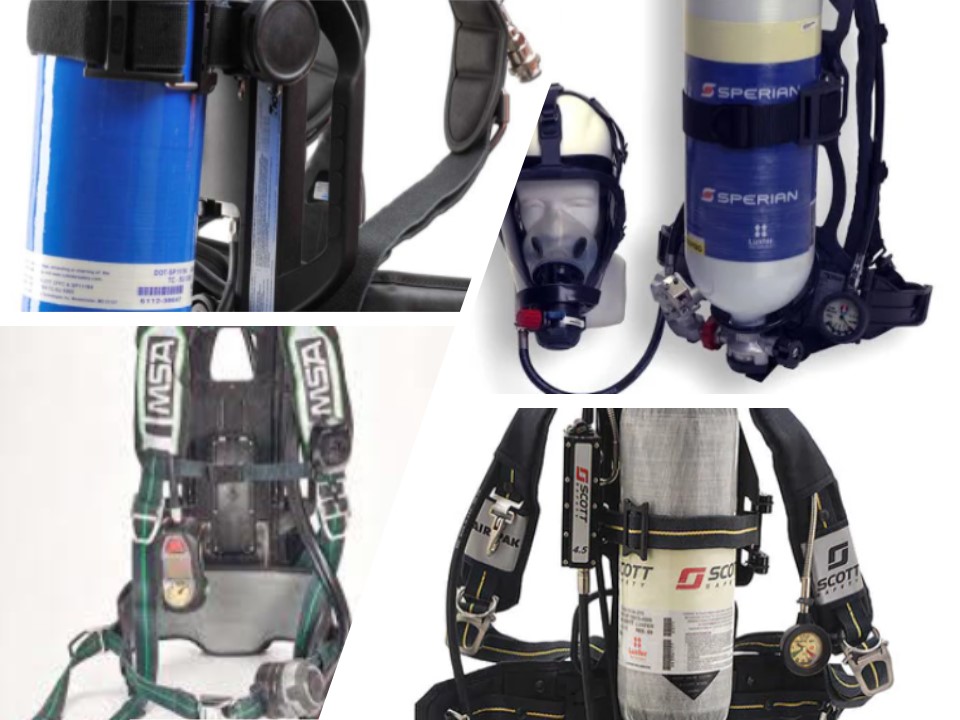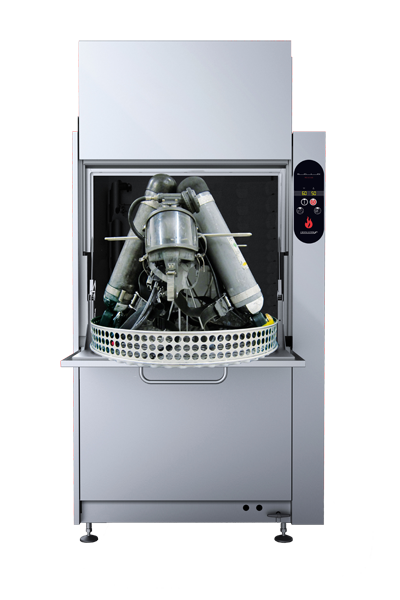Sponsored content from RESCUE Intellitech
By: Robert Avsec, Executive Fire Officer
Providing the necessary and required equipment and fire apparatus are costly investments for all fire departments, regardless of their size. But when we get right to the heart of the matter, two of the greatest investments any fire department makes are in their people and the personal protective equipment they need to get the job done. And not get killed, injured, or ill because of their service.

Paramount in these efforts have been the cleaning and decontamination of firefighter PPE., AKA, turn out gear following exposure to the chemicals, chemical compounds, and carcinogens present in the smoke they encountered during interior, structural firefighting operations
ALL PPE CLEANING AND DECONTAMINATION REQUIREMENTS ARE NOT EQUAL
Don’t believe it? Let’s look at some of the cleaning and decontamination that’s specified in NFPA 1851: Standard on Selection, Care, and Maintenance of Protective Ensembles for Structural Fire Fighting and Proximity Fire Fighting, for the jacket and pants of the structural firefighting protective ensemble as compared to that required for SCBA.
In Chapter 7: Cleaning and Decontamination, the technical committee for NFPA 1851 goes into detail with its specifications for the cleaning and decontamination of not only the jacket and pants of the firefighting protective ensemble, but also for the helmet, gloves, and footwear. For the cleaning and decontamination of the jacket and pants alone, the following are just some of the specifications listed under Advanced Cleaning (Section 7.3):
- Where the use of machine cleaning is specified for ensembles, and ensemble elements, advanced cleaning shall be conducted using a washer/extractor with the following characteristics, unless specifically prohibited.
- The washer extractor shall be programmable to permit multiple formulations for adjustments of detergent application, water temperature, water level, cycle type, function, and cycle time.
- The washer extractor shall not have a G force that exceeds 100 G or shall have the capability of drum revolutions per minute (RPM) adjustment such that the G force can be adjusted to not exceed 100G for all washed ensembles and ensemble elements.
- Top loading washing machines with or without a center post agitator shall not be used for advanced cleaning of ensemble elements or components.
- Before using any cleaning device other than a washer/extractor, the element manufacturer, verified cleaner, or verified ISP (Independent Service Provider) shall be contacted for instructions on how to best clean the ensembles or ensemble elements using the respective cleaning device.
- For advanced cleaning, a mild detergent with a pH range of not less than 6.0. pH and not greater than 10.5 pH as indicated on the product safety data sheet (SDS), or original product container shall be used.
- Water temperature shall not exceed 40 degrees C (105 degrees F).
- The specific formulation for the washer/extractor shall include a series of steps for filling the wash basket, adding detergent, performing multiple rinses, and including separate extractions between wash and rinse steps.
In contrast, the requirements for the cleaning and decontamination of SCBA contained in NFPA 1852: Standard on Selection, Care, and Maintenance of Open-Circuit Self-Contained Breathing Apparatus, consist of only the following (Chapter 6: Care):

- The external surfaces of the SCBA shall be cleaned and disinfected according to the manufacturer’s instruction using only those agents indicated by the manufacturer.
- The Facepiece shall be thoroughly cleaned after each use and disinfected as needed. Facepiece cleaning and disinfecting shall be performed according to the manufacturer’s instructions, using only those agents indicated by the manufacturer.
- The exhalation valve shall be cleaned and flushed. The Facepiece shall be dried and drying shall not be done in direct sunlight or in high heat. The exhalation valve shall be cycled to ensure proper operation.
- SCBA straps and harness assembly shall be cleaned and disinfected when required according to manufacturer’s instructions. Straps and harness assembly cleaning and disinfecting shall be performed according to the manufacturer’s instructions using only those agents indicated by the manufacturer.
- Under no circumstances shall chlorine bleach ever be used to cleans straps and harness assemblies.
- SCBA cylinder valve assemblies shall be cleaned and disinfected according to the manufacturer’s instructions using only those agents indicated by the manufacturer.
Quite the difference, no?
Protect Your Department’s SCBA Investment with The Solo Rescue Decon Washer
With the Solo Rescue Decon Washer from RESCUE Intellitech your fire department can have a cost-effective piece of equipment that enables your firefighters to clean and decontaminate their SCBA safely, effectively, and efficiently.
The Solo Rescue is approved to wash SCBA’s by the majority of SCBA manufacturers. This allows fire stations to go from washing [SCBA] manually by hand to washing in a machine. The machine is always providing the same result and the removal of carcinogens is much more efficient than washing by hand.
Bjorn Rowland, Vice President Sales & Marketing North-America for RESCUE Intellitech
Read Next: Is your fire department still cleaning its SCBA by hand?
The folks at RESCUE Intellitech have taken the guess work out of the cleaning and decontamination of SCBA. When the Solo Rescue Decon Washer is used to clean SCBA, you get an effective and efficient cleaning:

- Load two SCBA units and their facepieces into the washer, hit the “8-minute” wash cycle, and know that your SCBA is being cleaned with the proper amount of cleaning agent recommended by SCBA manufacturers (the in-line cleaning agent feed dispenses the proper amount every time).
- The water temperature for the wash cycle is within the manufacturer’s recommendations (the machine’s internal water heater can be set to produce water that’s between 104–130°F [40-55°C] at your department’s discretion).
- The SCBA receives a complete rinse with clean water (The water for the rinse cycle comes from a water inlet that’s separate from that which feeds the wash cycle).
But that’s not all. You have a washer/extractor for the jacket, pants, and hoods, right? With the Solo Rescue Decon Washer, your fire department can effectively “close the loop” for your PPE cleaning needs because the machine can also be used to clean firefighter helmets, boots, and gloves. With the Solo Rescue Decon Washer and your existing washer extractor, you can have two machines that cover all your department’s PPE cleaning and decontamination needs!
 Fire & EMS Leader Pro The job of old firefighters is to teach young firefighters how to become old firefighters!
Fire & EMS Leader Pro The job of old firefighters is to teach young firefighters how to become old firefighters!